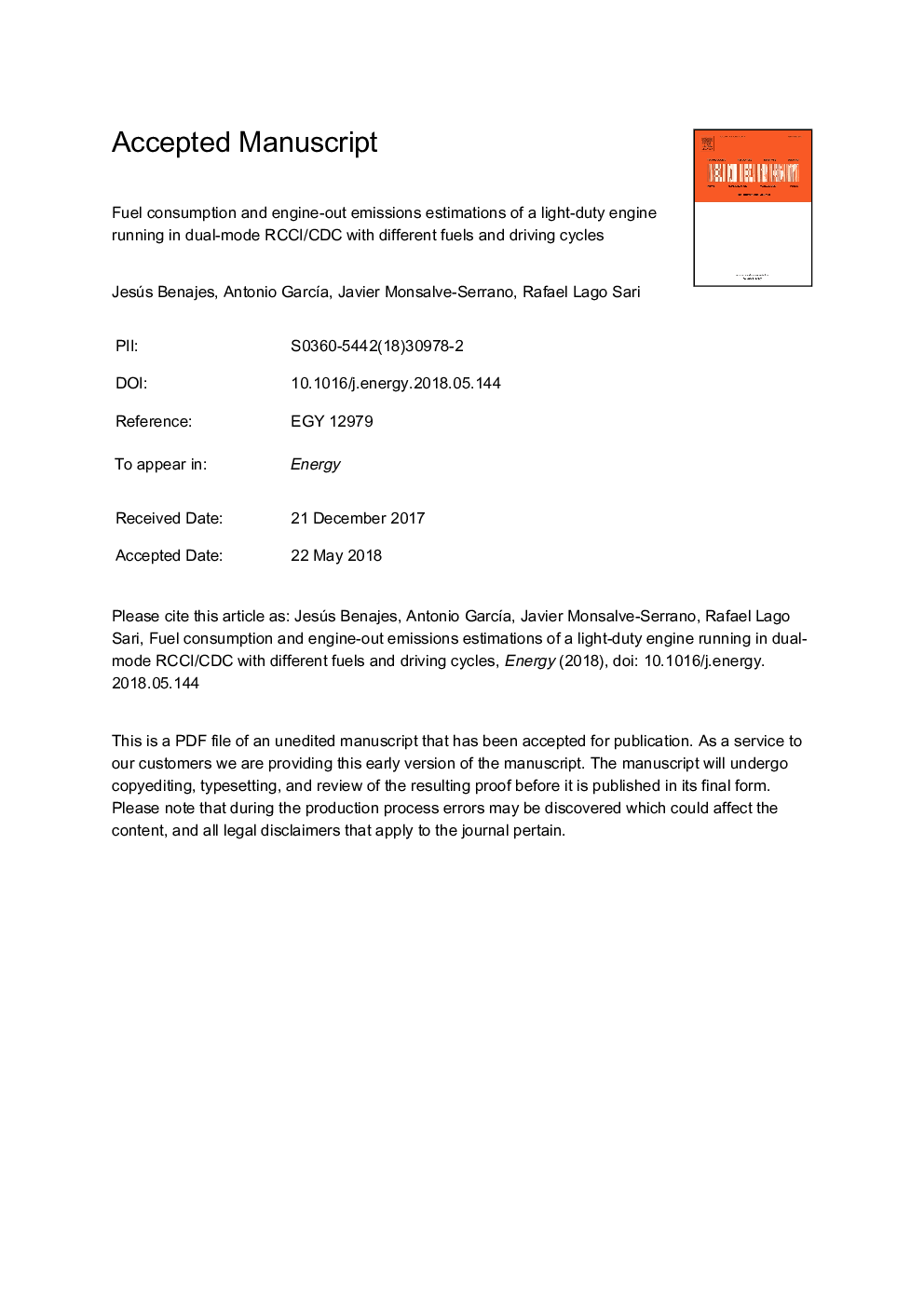| Article ID | Journal | Published Year | Pages | File Type |
|---|---|---|---|---|
| 8071188 | Energy | 2018 | 34 Pages |
Abstract
This work compares the performance and emissions of two dual-mode combustion concepts over different driving cycles by means of vehicle systems simulations. The dual-mode concept relies on switching between the dual-fuel concept known as reactivity controlled compression ignition (RCCI) and conventional diesel combustion (CDC) to cover the whole engine map. The experimental RCCI maps obtained with diesel-E85 and diesel-gasoline used as inputs to perform the simulations were obtained in a high compression ratio light-duty diesel engine (17.1:1) following the same mapping procedure in both cases. The driving cycles simulated to perform the comparison were the Real Driving Emissions cycle (Europe), Worldwide harmonized Light vehicles Test Cycle (Europe), Federal Test Procedure FTP-75 (United States) and JC08 (Japan). The results show that the dual-mode concept has potential to be implemented in flexible-fuel vehicles. Using gasoline as low reactivity fuel (LRF) for RCCI, the vehicle mileage would be equal to CDC, but having reductions in NOx and soot emissions of 16% and 50%, respectively, along the RDE cycle. Using E85 instead of gasoline, the reductions in NOx and soot emissions increase up to 50% and 85%, respectively, but in this case promoting higher thermal efficiency than CDC.
Related Topics
Physical Sciences and Engineering
Energy
Energy (General)
Authors
Jesús Benajes, Antonio GarcÃa, Javier Monsalve-Serrano, Rafael Lago Sari,
